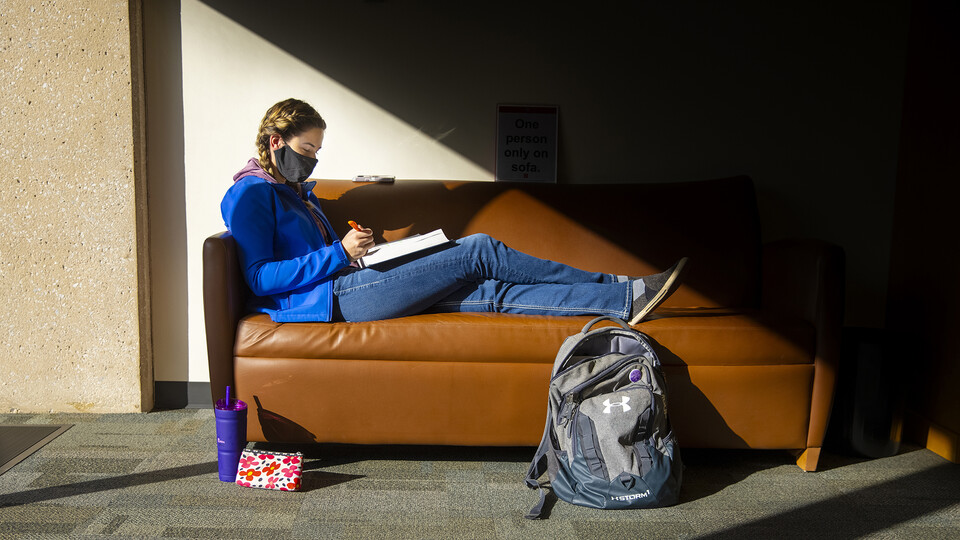· 5 min read
Testing not a substitute for COVID-19 prevention habits this holiday season

As we prepare for the holidays, many are taking advantage of free COVID-19 testing on campus before they travel or make any plans.
Although testing is helpful, Dr. Heather Eberspacher, University Health Center medical director, is reminding everyone that it is only part of the prevention plan and not a substitute for other safety habits such as physical distancing, wearing a face covering and washing your hands frequently.
Dr. Eberspacher says a negative test result does not mean you are COVID-free. In some cases, the test may not detect the virus, especially if you recently contracted it. You could be in the incubation phase and won’t test positive for several more days.
This is why it’s important not to use COVID-19 testing as a green light to relax and start gathering with others, especially in high-risk situations such as bars, parties and small group gatherings where face coverings aren’t worn.
“In many ways, a negative test can give you a false sense of security and tempt you to drop your guard,” Dr. Eberspacher said. “Now is the time to buckle down and stick to the prevention habits you’ve been practicing since the pandemic began.”
Although winter break and the holiday season is typically a time for gatherings with friends and family, Dr. Eberspacher encourages everyone to make an exception this year and avoid this risky behavior. Otherwise, COVID-19 cases will continue to rise, and the country’s health care system will be under further strain.
Instead of in-person gatherings, Dr. Eberspacher suggests people meet virtually to protect those who are higher risk.
“You can still have a meaningful holiday over Zoom, FaceTime or Skype,” she says. “You can go around and share what you’re thankful for or plan a virtual game or activity. Next year at this time, we’re going to be together. It may be hard to change your traditions this year, but it’s vital to keep everyone safe.”
If you do choose to gather with others this year, despite the risks, here are three things to consider:
Who are you putting at risk?
Older adults and people with pre-existing conditions are at higher risk for severe COVID-19 illness. Although you might not have anyone in your gathering who meets this criteria, Dr. Eberspacher says it’s likely one of you will come into contact with someone who does, and you could potentially infect them.
“If you must get together, make it a brief visit with limited hugging or close contact,” she said. “Make it a chance to greet one another rather than a prolonged shared meal around the table without face coverings. Open a window to get good ventilation to the room you are gathering in. Or even better, if weather permits, celebrate outside. Continue to remember your distance from others and masks when not eating or drinking.”
What precautions are you taking before you meet?
Community spread is high across the country. No matter where you plan to gather, ensure all attendees self-quarantine before getting together. This means everyone should avoid seeing anyone outside their household for two weeks before you get together.
If you’re the host, Dr. Eberspacher recommends communicating ground rules before people arrive. Email everyone about bringing masks, how long the gathering will last and steps you’re taking to prevent spread.
Monitor yourself for symptoms. If you have a fever or cough in the two weeks before your visit, stay home and do not attend the gathering.
Avoid traveling to other areas. If you must travel, driving is safer than flying because airports involve waiting in enclosed spaces with others who aren’t from your household.
How are you limiting risk at the gathering?
Many people are contracting COVID-19 at indoor gatherings with family and friends where face coverings aren’t being worn. Face coverings have worked for years in clinical settings to control the spread of infectious diseases. New controlled studies on face masks support their use to protect both the wearer and those around them from spreading illness.
In addition to wearing face coverings, there are other precautions you can take to reduce risk at the gathering. Consider the ventilation or airflow in the area you are meeting. Exposure is about proximity, duration and ventilation. If you can shorten the close contact times and increase the ventilation, you greatly reduce your risk.
- Keep it small and invite fewer than 10 people.
- Meet outside if possible or open windows to increase the ventilation if you must remain indoors.
- Have hand sanitizer available and use good hand hygiene.
- Reduce exposure time to less than an hour instead of multiple hours.
- Have one person handle all the food.
- Keep 6 feet apart as the bare minimum of distance. In crowded areas with poor ventilation, the virus can still infect people who are six feet apart.
Vaccine-less herd immunity or giving up all infection control attempts would mean millions of cases and deaths from a preventable disease. Dr. Eberspacher encourages everyone to consider the impact of their actions on health care workers and our community.
“We know people have COVID-19 fatigue and that continuing to limit how we see family and friends around the holidays is difficult, but the alternative is much worse,” Dr. Eberspacher warned.







